Tosh Berman's Blog, page 187
January 20, 2016
"Letters to Emma Bowlcut" by Bill Callahan (Drag City)
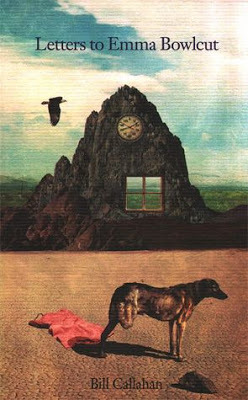 ISBN: 978-098204802-3 Drag City"Letters to Emma Bowlcut" by Bill Callahan (Drag City)
ISBN: 978-098204802-3 Drag City"Letters to Emma Bowlcut" by Bill Callahan (Drag City)An odd but, an effective book by Bill Callahan, who is known as Smog as well as making music under his real name. "Letters to Emma Bowlcut" are a series of correspondence to a girl that we know very little about, and not too much about the letter writer as well. We know he goes to the vortex, which is by no means clear if this is a real place or not, as well as watching boxing matches in a gym. The letters are only one-sided and from the author, but we do know that the woman that he writes to also sends him letters. The beauty of this book is Callahan's sardonic sense of humor. He's a very talented writer and he can convey the strangeness of a specific situation and comment on it. Whatever it's a boxing match or visiting his grandmother in a rest home, it is totally unique due to Callahan's point-of-view. If one is a fan of his music & lyrics (and what I have heard, is excellent) you, the reader, will love this book.
- Tosh Berman
Published on January 20, 2016 12:56
January 19, 2016
"In Love" by Alfred Hayes (Introduction by Frederic Raphael) NYRB
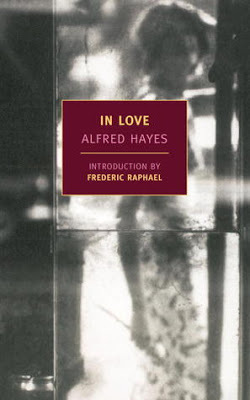 ISBN: 978-1-59017-666-5 NYRB"In Love" by Alfred Hayes (Introduction by Frederic Raphael) NYRB
ISBN: 978-1-59017-666-5 NYRB"In Love" by Alfred Hayes (Introduction by Frederic Raphael) NYRBBy the title "In Love," one would think this is a hallmark card sentiment. Very far from that, in fact, author Alfred Hayes cuts into the idea of a relationship if he was a surgeon in the middle of an open heart surgery. The book is almost a stream of consciousness, with respect to the writing style of Hayes, who tends to expose the most "inner" thoughts on the narrative of a relationship being torn apart by another man who wants to pay $1,000 to sleep with "his" woman. No one here is a bad guy or girl, but more of a study in what people want in a relationship.
The book is set in Post-war Manhattan, and one can get a scent of the "Mad Men" era through its pages. It also reminds me of that series, due to the psychological profiles of the major characters in that series. This anti-valentines day novella is very sharp, and very much like Hayes novel "My Face for the World to See." What is similar is Hayes talent to uncover the characters and show them as what they are. He has incredible insight, and ways he reminds me of Patricia Highsmith, in his ability to strip away the excess and show the meat in the narrative.
Alfred Hayes is one of those writers who somehow fell into the cracks of literary history. He worked in Hollywood as a film writer as well as working for Television. But the other interesting aspect of him, is his work on Italian neo-realist films such as "Bicycle Thieves." And he had a hand in writing the script to the great Fritz Lang film "Clash by Night.
We're lucky that there are presses like New York Review of Books (NYRB) that re-issues these "lost" classics. Read and learn about the human heart and how it works with the "head."
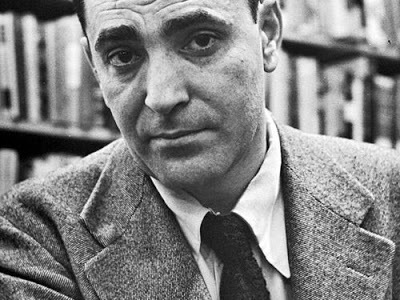
Published on January 19, 2016 11:11
January 16, 2016
"Francis Carco: The Career of a Literary Bohemian" by Seymour S. Weiner (Columbia University Press, 1952, O.P.)
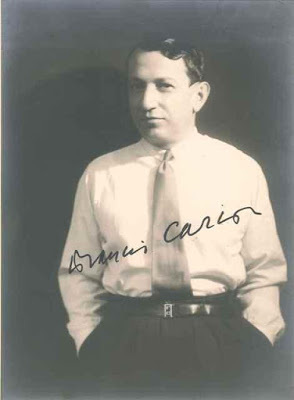
"Francis Carco: The Career of a Literary Bohemian" by Seymour S. Weiner (Columbia University Press, 1952, O.P.)
I have only read two books by Francis Carco. "Perversity" and "Streetcorners." He's the poet of the criminal underground - which means the world of sleazy Parisian bars, the home of whores and their pimps, and a landscape full of alcohol and drugs. A remarkable world, of course! Compared to what he wrote in his native language and published in France, there is very little of his works translated into English, and all, I believe is out of print. Which is a horrible shame, because he is clearly an important and major voice in French literature.
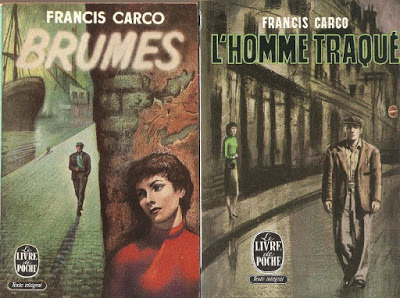
Through the Los Angeles library system, I found a copy of the Seymour S. Weiner's book of Carco, which is both a biography and a literary study on the writer. It's a wonderful book, but on the other hand, it's a weird way to be introduced to Carco, considering there is literary analysis on books I have never read or even heard of. It is very much like reading on a phantom writer that doesn't exist.
Carco clearly knew what he was writing about. He understood the world of criminals and their needs and wants. He is sort of a combination of Henry Miller and Charles Bukowski - in the fact that both writers cover their territory to the fullest. Weiner, who wrote this book in 1952 or therefore, and published that year, is not meant to be a public general reading matter, but as an academic study on a man and his writing. The best part of the book for me, since I haven't read that much of Carco's work, is the chapter devoted to authors who influenced Carco. Especially François Villon, the criminal poet. Worth tracking down, but a must to read Carco's works. I recommend the two books I have read, both "Perversity" and "Streetcorners" (published by the great Los Angeles located press, Green Integer).
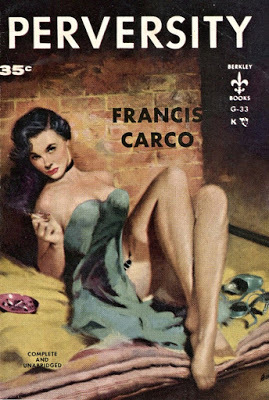
- Tosh Berman
Published on January 16, 2016 11:22
January 15, 2016
"The Other Paris" by Luc Sante (FSG)
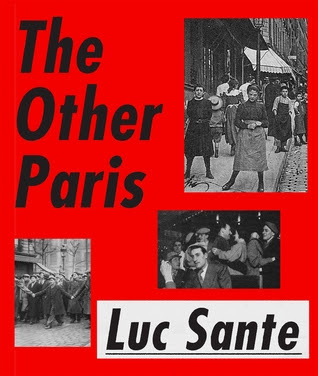 ISBN: 978-0-374-29932-3 FSG
ISBN: 978-0-374-29932-3 FSGThe Other Paris" by Luc Sante (FSG)
Of all the cities in the world, Paris has a mythical hold on me. I don't know why? Los Angeles and Tokyo are my two other favorite cities, but somehow Paris has captured my imagination, and this book by Luc Sante, pretty much describes my imaginary Paris as a factual place. I have been there at least six times in my life, and yet, it never disappoints, just gives me a thrill whenever I'm confined in Paris. Sante's "The Other Paris" pretty much describes my fascination, as there is only my imagination that is the French city, and then there is "real" Paris.
Sante uncovers a Paris that is exposed in certain works of literature, such as "Fantomas" and the film works by Louis Feuillade. This is Paris history as if it was written by The Situationists International and the Surrealists. Crime, vice, a little bit of decadence here and there - it is what I imagine being in Paris, and therefore, clearly is.
The book often reads and looks like a school textbook, and one wonder if "The Other Paris" will serve that role in a classroom. It should be. As well as being, without a doubt, one of the great books in English on the great city of my imagination and therefore known as Paris. I also realize by reading this book that Paris always had a great deal of street violence with respect to murders and bombs. What happened a few months ago in the city of light, is common, when compared to the Paris of the 19th century.
Beautifully illustrated throughout the book with images collected by Sante, so unlike other "history" or "travel" books, this seems to be a very personal work. And that I think is one of the key aspects of this work, is making a public space or city into a personal landscape. Luc Sante did this and he did it remarkably well. A classic book.
- Tosh Berman
Published on January 15, 2016 08:22
January 8, 2016
"The History of Rock: 1966" by the Editors of UNCUT Magazine
"The History Of Rock: 1966" by the Editors of Uncut Magazine
For sure something happened in 1964, and maybe it was the year when I turned 10, and really became aware of music pop culture around me. To my ears, '64 was full of bouncy music made by people with odd accents. It was the first time in my life that I realized that there was music being made that appealed to me, and not only that, and perhaps even more important, it came from another culture. By 1966, I was introduced to the word and aesthetic of "sophistication."
"The History of Rock" is a monthly publication published and edited by Uncut Magazine, where they use the archives of New Musical Express and Melody Maker regarding contemporary music at that time. It started off with "1965," and now I just finished reading the entire issue of "1966." I have read so many books and articles dealing with the British invasion, that in this late stage of my life, it is totally refreshing to read archival material as when things were happening or in proper english, as it happened.
The Rolling Stones and The Beatles were at their dizzy heights of making incredible recordings as well as being the prince (Stones) and King (Beatles) of the pop world at the time. The beauty of this magazine is obtaining the role of the journalist at this time. Most I think were mostly press relations, and not only worked for the music papers, but also for the artists as well. So, one does not get critical attacks, but mostly acknowledgment and of course, praises. It is ironic that at this moment in time in the U.K. great music was being produced by all sorts of bands and artists: Donovan was making great recordings with Mickie Most, The Small Faces were getting more sophisticated as they entered the Andrew Loog Oldham world, and the Fab Four was spending more time in the recording studio, where one gets the amazing "Revolver" album. Due to the times, Brian Jones was adding more exotic instrumentation to the Stones recordings, which made their masterpiece "Aftermath" such a classic and brilliant album. Even shit records produced in England were at the very least, good constructed pop.
Also UK readers and listeners were fully accepting the genius of Roy Orbison, early Simon & Garfunkel, and the beautiful Beach Boys. It seemed for once, that the UK and the U.S. were in-tuned at the same time and place. A pop utopia taking place, and ears was stretched out to the West Coast to India. "The History of Rock" 1966" captures that series of moments as it happened. Also great photographs and this is a perfectly designed magazine.
- Tosh Berman
Published on January 08, 2016 10:15
December 31, 2015
"Submission" by Michel Houellebecq
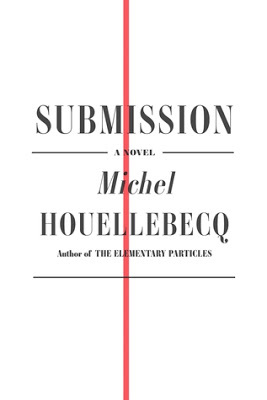 ISBN: 978-0-374-27157-2 FSG
ISBN: 978-0-374-27157-2 FSG"Submission" by Michel Houellebecq (FSG)
A beautiful romp through France in the 21st century. No, not really. On the other hand, Michel Houellebecq's new novel "Submission" is a witty commentary on the issues of French/European culture, religious politics and of course the main subject of this novel, the great French author of the 19th century J-K. Huysmans. The best part of the novel is when the main character who is a literary professor, discusses Huysmans.
My favorite type of novel is one where the author writes about ideas, and "Submission" is very much about ideas. Popular media would label this book as being Islamophobic, but I think Houellebecq is really criticizing the modern world, and not praising anyone. In a way, he reminds me of Swift, in that he looks at culture from a distance, and pokes holes into it.
I admire Houellebecq as a craftsman writer. He knows how to tell a tale, and is often funny. I enjoy reading him, and I enjoy being in his company on the written page. But beyond that, I think he is quite hollow. There is something vapid about his presence. Serge Gainsbourg had bite, but Houellebecq to me, is a distant ghost of such men of past generations. Still, I enjoy the ride that he takes me through his writing. And to be honest, I would rather that this book just focus on Huysmans. Politics is bullshit.
The beauty of reading a Houellebecq book is that you feel the lecturer at the Sorbonne is Houellebecq. In fact, he's the biggest character in the whole book, of course. It is like reading a Woody Allen short story, where you can hear and actually feel the Woody presence. There is nothing wrong with that, in fact, it's great. So readers of Houellebecq's work wants to experience the Houellebecq experience. In many ways, he's a bigger presence in one's life. He drinks, he smokes, he fucks.... what is there not to like about him? On the other hand, like life itself, it's an illusion of sorts. It really depends if one follows the illusion of the writer as a great thinker. Houellebecq to me, is a great entertainer.
- Tosh Berman
Published on December 31, 2015 09:14
December 27, 2015
The Sunday Series; Sunday December 27, 2015
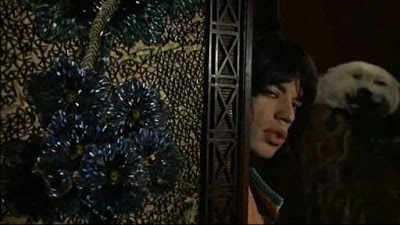
The Sunday Series:Sunday December 27, 2015
Ah, the last Sunday of the year 2015. A series of moments for me to reflect on all my successes and of course, failures. Oddly enough, it’s the failures that capture my imagination and attention. The successes would be perfectly OK, if it wasn’t for the nagging failures that pretty much spells out T.O.S.H. To bring lightness, let’s think of the successes this year. Synesthesia Press put out my short piece from the “365” series (which I wrote everyday in the year 2014) as well as a short story published by Thistle & Weed Press, in conjunction to the Terry Braunstein exhibition that is taking place at the Long Beach Museum of Art. So since I left Book Soup (a book store in West Hollywood) three years ago, I have produced two books under my name, (“Sparks-Tastic” and “The Plum in Mr. Blum’s Pudding”) as well as a short story for the 3AM Magazine website out of London, and critical reviews published by Byron Coley in his zine/magazine Bull Tongue Review. Through my press, TamTam Books, I have published Jacques Mesrine’s ‘The Death Instinct” and Lun*na Menoh’s “A Ring Around The Collar.” This is all, of course, great.
The bad news is I’m on the collapse of financial disaster. This past week I had to fire both my valet and butler. I began by paying them a weekly check, which slowly turned to free food for them in the fridge. Now that the food had disappeared from the refrigerator, they have disappeared as well. I guess we can now sell the fridge, or turn the huge icebox into a bookshelf with a heavy door. In fact, the kitchen has been transformed into a library. Antique dishes have been sold through ebay and craigslist, and in the drawer that once had a kitchen utensil, now holds old issues of Mojo Magazine. Since the gas has been cut off, we have one electric pot to heat up water for delicious cups of hot water while staring out the window on a cloudless evening. My sweetie and I like to take one spoon we have, and stir the water till it becomes lukewarm, and comment to each other on our state of stress.
It gets chilly in the winter night, and the cold draft tends to cut right through our summer clothing. We often have to cut up our furniture and throw it into our fireplace to stay warm. As we move the (what’s left of it) couch and place it by the one flickering flame at the base of the chimney, we tend to remember old folk songs from the 1930s dust bowl era. Life was often simpler than now and not only that, but the people in the black and white images looked simple as well. Due to the photographs I have seen from that era and subject matter, it is all gray and at times it’s gray on top of gray, which makes it into a super gray. I don’t recall ever seeing a color photograph of the Okies traveling West bound. I often wondered if they wore bright color shirts or pants. My image is of them is wearing gray clothing, or perhaps their actual clothing lost color due to the various dust storms that they came upon them on a regular basis.
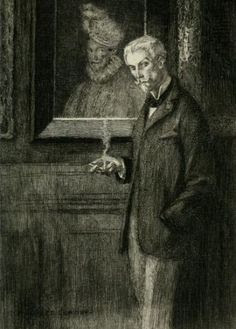
Looking at my own life, I clearly saw the areas where I made the wrong turn. Yet, in my own fashion, I totally ignored the direction I was heading towards, due to a great belief in my ability to write a bestseller or two. That my friends, didn’t happen. I wrote a lot of words. My diary, “I Go With My Moods, ” one of my many writing projects for the year 2015 is over 85,000 words. Yet, even though my computer screen is full of my words, it hasn’t produced any capital, in other words, currency.
We rarely go out. Our existence is somewhere between Turner and Jean des Esseintes in the rather large house that we can no longer live in. Often in nights, I wonder around each room in a drunken haze, trying to find where I left the right side shoe, while wearing the left. It would be comical if it wasn’t so tragic. I do have a room where it is devoted to the image of me as a child. When I was a baby till I was 10, I was often photographed by my father, as well as by his friends. Due to that, institutions like the Getty own the negatives that feature my presence on film. If a friend didn’t send me some photos through the miracle of the I-Phone, I would never have them. I barely recognized myself when I looked at photos that were taken 50 to 55 years ago. Now, when I look in the mirror I think, as I often do, I wonder what happened to that little boy.
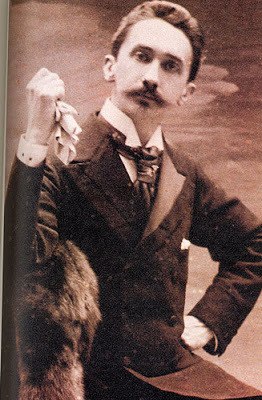
As I write, I have two scarfs around my neck, a sweater, and a long bath robe. Today, I’m sad, because it’s the last Sunday of the year 2015. What have I done? Where am I going? And perhaps the most interesting question, who are you? It is time to get on my horse, and wander off to the sunset at the end of the road. I’ll be around. If you need me, all you have to do is put your lips together and blow. Till then, farewell.
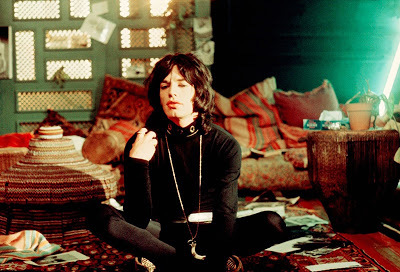
Published on December 27, 2015 15:12
December 26, 2015
"The Illogic of Kassel" by Enrique Vila-Matas (New Directions)
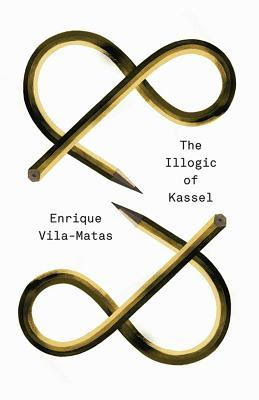 ISBN: 978-0-8112-2149-8 New Directions
ISBN: 978-0-8112-2149-8 New Directions"The Illogic of Kassel" by Enrique Vila-Matas (New Directions)
Kassel maybe illogical, but it's totally logical for Barcelona citizen Enrique Vila-Matas to write a book that takes place in Kassel, Germany during the Documenta arts festival. For one, Vila-Matas is one of my favorite living writers, which is saying a lot, because it seems that I only deal with dead authors - but alas, that is only an illusion. The beauty of Vila-Matas' novels is that they are somewhere between fiction and lit-crit. All the novels I read so far focuses on literary history and the importance of the location in how and where this literature was produced. Sometimes the reader forgets that they are reading a work of fiction (technically speaking) and not literary history. The narrator of this novel is Vila-Matas, and he's invited to participate in the Documenta arts festival by one, writing and giving a lecture there, but also as a performance piece where he writes in a Chinese Restaurant where the public or diners can come and go while he's working. This to me, would be a dream place for me to work, but for Vila-Matas, it is both an interesting concept as well as a form of hell.
There are so many levels of things happening in this book. One is of an author who feels misplaced in such a landscape, but it is also a critique of the festival and its artists, as well as the role of the writer in such a location and the role one has to take to be, either an artist or critic. Since I have read all his novels, I suspect the author is fascinated by the division between the role of the critic, the historian as well as a fiction writer. I didn't google all the artists that came up in this novel, because I suspect that they are all real and probably very well known visual artists, mostly from Europe. Some I know, so I trust his "voice" regarding the others.
As a writer (if I may call myself one) I find this novel fascinating. On the narrative level, it is about being a writer, a man of words, and coming to an environment that is mostly visual. Vila-Matas mentions Raymond Roussel quite a lot throughout the book, and like the French authors' novels, he too comments on what is happening on the island (in this case the German town Kassel). He goes to see artists that were recommended to him, and basically he is sort of an open book with respect to the art works he is dealing with This is the critical aspect of the novel, and the narration is him dealing with "his" work on hand. For a writer this is something that one does all the time, but I think for a reader, they are kind of forced to see what a writer goes through, with respect to his or hers subject matter. I, clearly identify with the position of such a novelist like Enrique Vila-Matas.
Also for the reader, they will probably get more enjoyment out of the book if they knew the tradition of the Documenta festival, as well as the authors that Vila-Matas mentions, for example Nietzsche, Sopie Calle, and of course, Raymond Roussel. Contemporary art geeks I think would love this book, but also noted is the playfulness of being a narrator and what is real or not real. Vila-Matas is a master, and I'm happy to swim in his bathwater.
Published on December 26, 2015 19:57
December 21, 2015
"Roland Barthes" by Andy Stafford (part of the Critical Lives series & published by Reaction Books)
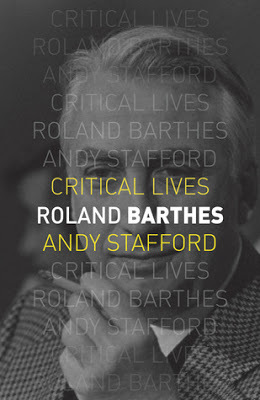 ISBN: 978-1-78023-495-3 Reaction Books"Roland Barthes" by Andy Stafford (Critical Lives series, published by Reaktion Books)
ISBN: 978-1-78023-495-3 Reaction Books"Roland Barthes" by Andy Stafford (Critical Lives series, published by Reaktion Books)Of all the French thinkers from the May 68 era (roughly) my favorite is Roland Barthes. I identify with him because he's a writer/thinker who jumps from one subject matter to another. Despite that, whatever he writes about, one can see a reflection of his personality on that subject matter he is covering. When I first went to Japan, I brought with me a book about Japanese customs (very handy at the time) and Barthes' "Empires of Signs," which I think may be the best book on Japan from a foreigner, besides the great Donald Richie of course. What interested me about that book is how he analyses what he saw in Japan, specifically food and sumo match, and how that 'read' to him. It was no longer a book of facts, but almost an emotional as well as an observation on his part, and how he understood it. That journey alone, is sometimes more interesting than the results. So, I'm fascinated by Barthes technique and an excursion into another world of sorts. His study on fashion and its publications is equally fascinating, because it is something I normally see, but often don't think about.
Andy Stafford's book length study on the works of Barthes serves both as an introduction to his critical works, as well as a biography. He pretty much goes through all his major or well-known books and essays to convey what was unique about Barthes and his writing. Again, there seems to be always a memoir or autobiography at work, even through his various studies, and his mother for sure plays a huge role in his life. Barthes was not exactly conservative, but he was a gay man who chose to live in the shadows, than say someone like Michel Foucault who was not only 'out, ' but also a forceful personality. He was also a man who was critical of the 'Left' as well as pretty much agreeing with a lot of their agenda. In truth, Barthes was a man on his own.
On a personal level, I often think of Barthes when I'm writing. I too have a deep interest in the world around me, but I seem to have a need to put my individual stamp on what I have seen or observed. The act of writing is an activity where one explores their inner world, as they look outward. The results are sometimes not on the page, but the journey itself. I like Roland Barthes for that reason. Stafford committed a good introduction to this unique thinker.
Published on December 21, 2015 15:58



